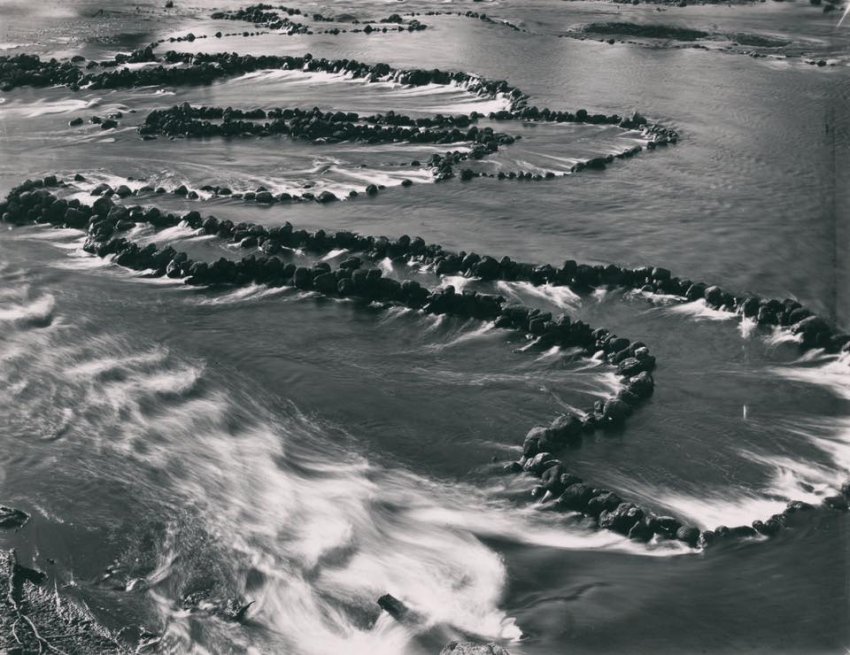
The Ngemba Fish Traps on the Barwon River in north-west NSW town of Brewarrina, hold profound spiritual and cultural importance, especially for the Traditional custodians.
The Fish Traps are thought to be the oldest human-made structure in the world.
Yet on July 12, Keith Pitt, the federal Minister for Resources, Water and Northern Australia announced a new project, supposedly to “boost tourism”, at the Ngemba Fish Traps. Despite assurances that elders and Traditional Owners would be consulted before any new development began, this has not happened.
The federal government has allocated a $920,000 grant to Brewarrina Shire Council for a suspended pedestrian outlook over the Barwon River,which would accommodate 50 people and a yarning circle. It also includes a 2.4 kilometre path linking the fish traps to camping sites and the Brewarrina Ochre Beds.
Grace Gordon, Ngemba elder and chair of the First Nations-led Ngemba Community Working Party (NCWP) told Green Left that no Ngemba elders were consulted.
“We knew $920,000 was awarded to develop the Fish Traps for tourism, but work has been happening [now] for four weeks,” Gordon said. The NCWP was formed in 2005 and is one of 16 working parties across the North West of NSW that make up the Murdi Paaki Regional Assembly.
Doreen McHughes, vice-chair of the NCWP, said they were “calling for an immediate halt to any further works on the Fish Traps, Ochre beds and burial grounds”.
McHughes told GL that the yarning circle was a “desecration” because it contravened cultural rules. Culturally inappropriate stones were brought in from Queensland for the new yarning circle.
“We are demanding the government remove the rocks from Queensland from the sacred site on the riverbank. We want the rocks removed from the pool and from within the school. Further, we want them to remove the new viewing platform. We want a guarantee there is a halt to any work conducted on the walkway.”
She also criticised the planned viewing outlook: “We know they are planning to build a walkway over the top of the fish traps, saying it will be good for the elders because they will be able to see from the top. But the elders know what it looks like. We’ve seen it from all sides.”
McHughes continued: “We are standing up like the elders did in Uluru. They have to give us proper dialogue.”
The NCWP sent a complaint to NSW minister for Aboriginal Affairs Don Harwin on July 12 saying “at no time were the Ngemba Community Working Party informed, consulted or included in this process of works on sacred sites which include the Fish Traps, Ochre beds and burial grounds stipulated in the Brewarrina Community Development Plan”. The NCWP has called for mediation before any further works are carried out.
Ngemba activists in the NCWP were not invited to the launch, however some attended after finding out about it at the last minute.
Natalie Eastwood, also from the NCWP, wanted answers from the Brewarrina Shire Council mayor Phillip O’Connor at the launch: “What are you doing here, where are the black fellas, where are the Ngemba elders?” Eastwood asked. “You are desecrating a sacred site.” O’Connor replied “It will be good for tourism.”
McHughes has asked Mark Coulton, federal MP for Parkes, who had flown to Brewarrina for the launch for an explanation but he refused.
“The fish traps are the oldest ancient man made structure in the world,” Gordon said.
The Ngemba Fish Traps were formally recognised for their cultural importance when they were included in the National Heritage List in 2005.
The listing notes the technological complexity of the structure revealing a “thorough understanding of dry stone wall construction techniques, river hydrology and fish ecology”.
Moreover, at 400 metres long, the fish traps are the largest recorded in Australia.
Since colonisation, the Ngemba Fish Traps have been in danger. In the 1920s, white settlers stole stones from the fish traps to use in building foundations. McHughes said a weir built in 1971 on the Barwon River further damaged the traps because it stopped “the proper flow of the river”.
Like all North West towns water rights are contested in Brewarrina. Corporate irrigators are depleting the Barwon River. When cotton and almond growers turn on their irrigation pumps, the river flows backwards causing destruction.
As a result of water theft, in 2019 Brewarrina and other towns in the region experienced “day zeros”: there was no drinking water and masses of fish perished. With rivers dried up and fisheries depleted, townships felt the pressure to generate tourist interest.
[Since publication, GL has been made aware that there are differences among First Nations peoples on the development of the Fish Traps. You can sign an online petition on the Ngemba Fish Traps. Gill Boehringer helped produce the 2019 Citizens’ Inquiry into the Health of the Barka / Darling River and Menindee Lakes and he and Rachel Evans are Water for Rivers activists.]